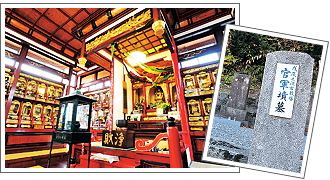 Home
Home- Tourist sites
- History and culture
History and culture in Shonai Town have been carefully safeguarded by our forefathers.
Visitors can get to know the history and culture of the town through historic temples and shrines, historic sites, and the achievements of great figures who helped the community and Japan.

A list of tourist sites
Further narrow down search results.
-
Along with Dewa Sanzan and Zenpo Temple, Kumagai Shrine has long attracted worshippers as a sacred place in Shonai. Saburoube Kumagai, who is enshrined as a guardian spirit, is a noted historic ind...
-
Site where Matsuo Basho came ashore
Kiyokawa, where Matsuo Basho came ashore, is the starting point for the "prayer road" leading to the Three Mountains of Dewa and people came ashore here to continue on their journey to the sacred m...
-
The forest is the battleground where the Shonai Clan and the new government army fought in the Japanese civil war between Imperial and shogunate forces. Today, there is a walking path. In 1893, the...
-
This is where Hachiro Kiyokawa, a senior 4th rank patriot of the Meiji Restoration, is enshrined. His possessions are on permanent display in the memorial hall located on the shrine grounds.
-
This temple has the graves of Tojibe Saito, men of the Shonai Clan who died fighting in the Japanese civil war, and people who died in the Tenpo famine. The Folding Screen of the 12 Celestials, dra...
-
Shuuin Naitoh Memorial Museum of Watercolors
Approximately 2000 pieces by Shuuin Naitoh, who served as chairman of the Japan Association of Watercolor Artists, are kept and displayed at this museum. Exhibits are changed by season. Located nex...
-
Toshinaga Kitadatedaigaku, who led construction of Kitadate Dam, is enshrined as a water god. A festival is held here each year from May 1–3. In addition, various leather strap armor bindings and a...
-
The dam was constructed in 1612 under the supervision of Toshinaga Kitadatedaigaku, the lord of Karikawa. The construction prompted the development of expansive new rice fields and new villages, fo...
-
Materials on exhibit include agricultural tools and folkcraft. The museum commemorates the achievements of Kameji Abe who created the renowned Kamenoo rice plant, which led to development of high-q...
-
This monument was built on the grounds of Koideshinden Hachiman Shrine to commemorate Kameji being awarded the Medal with Blue Ribbon (given to persons of merit for industry promotion, etc.) in 192...














